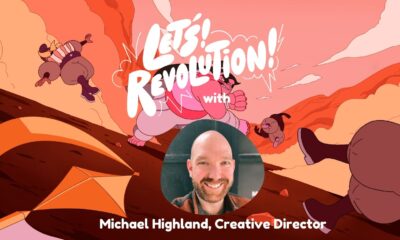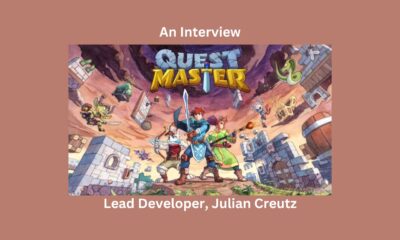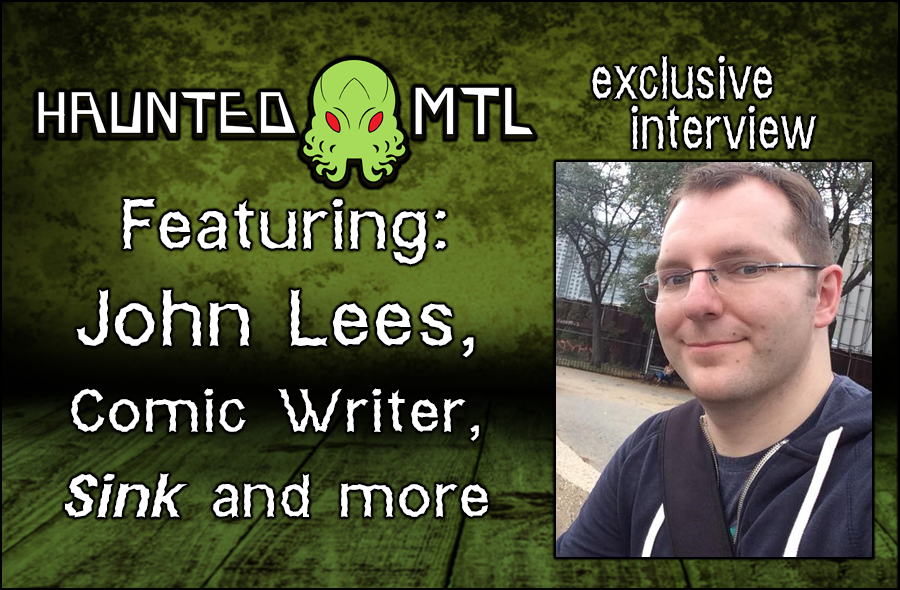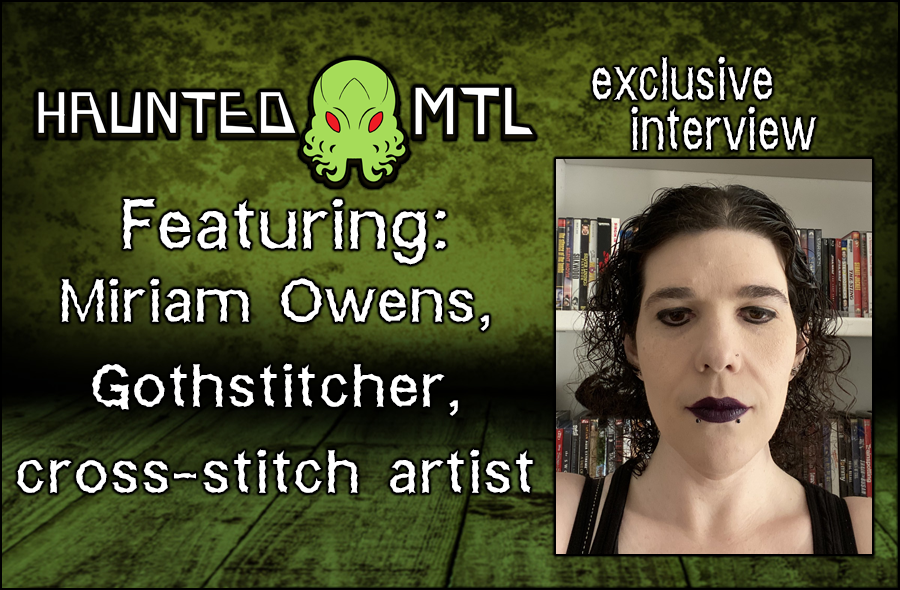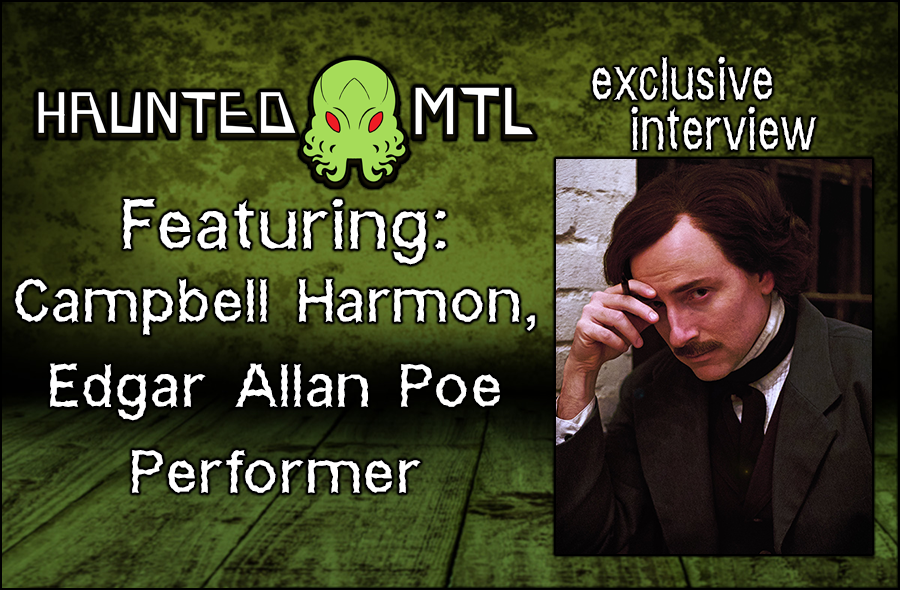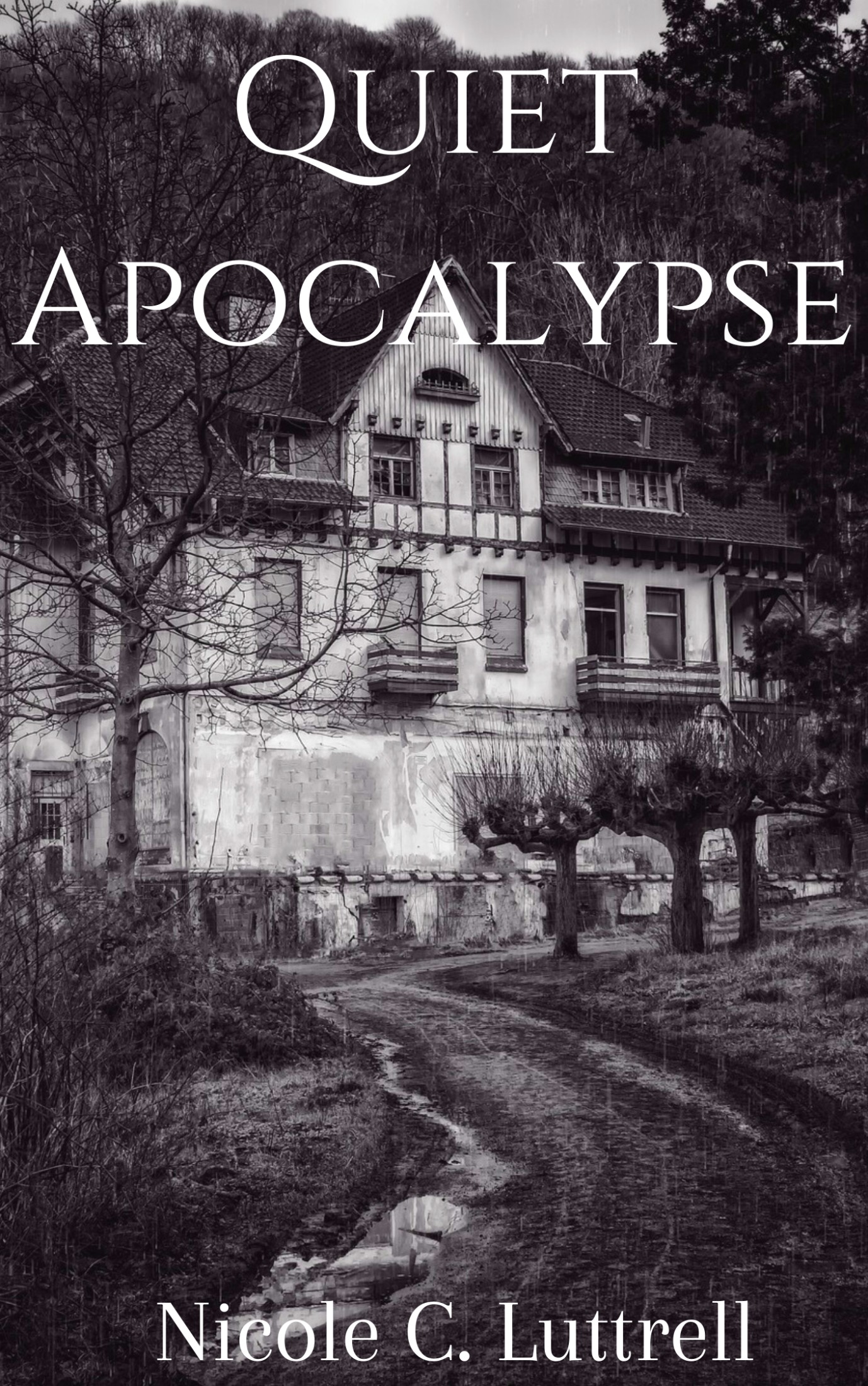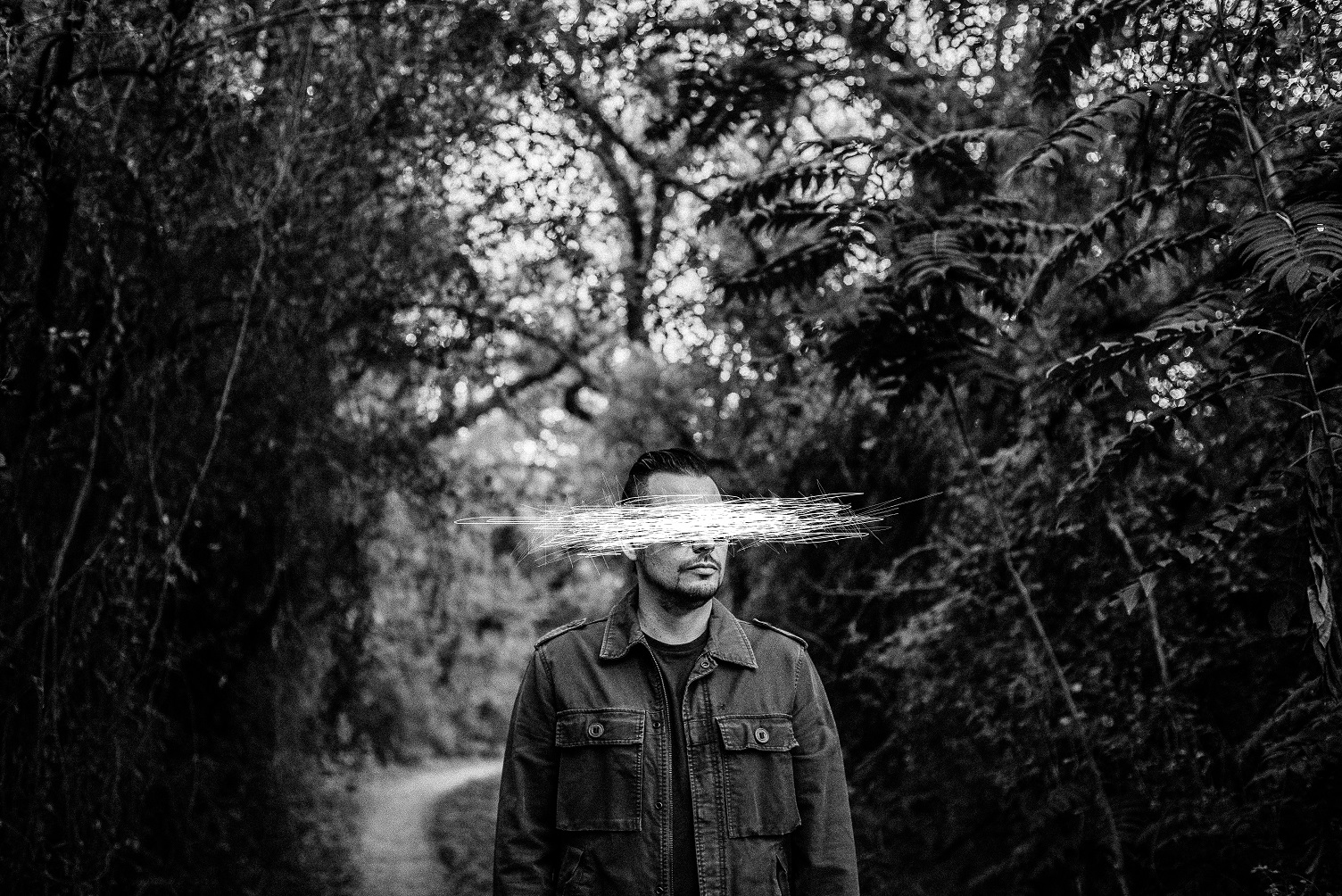
Interview: Horror Composer Gerardo Preciado
When we first listened to Ancient Order of the Droids, the relaxing Daft Punk like tunes reminded us of the fun in music. The genre being specific to this creator, the art would blend well with the right Horror film(s). Making music for “imaginary 80s Horror movies” is Preciado’s purpose. Grab a beer, cut Preciado’s Spotify Playlist on, and allow yourself to remember what’s so great about to famous tunes of the 70s and 80s.
Why “Imaginary 80s Horror Movie” Music?
When we were kids, my older brother would rent and show me every Horror film in the video store. Before I was 10 I had seen all the Friday the 13th films, Nightmare on Elm Street, Halloween, Texas Chainsaw, Evil Dead, etc. When we were older, we started making short films with a video camera, and we naturally gravitated toward not only Horror but genre films. We’d make our own special effects, bloody squibs, all of that stuff.

And I guess it’s as simple as… making Horror music is a lot of fun. And what I love about the genre the most is regardless of budget or quality of the film, you can tell the creators must have had a blast doing the bloody, gory scenes. You don’t really get that with other genres. It’s no wonder why so many filmmakers start with Horror.
With all the creative outlets available to you, why make music for imaginary 80s Horror films?
I started making music a long time ago now, did the whole band thing but from the very beginning I wanted to make a film score. Several years ago, I created a project called Ancient Order of the Droids to make music for unexisting films.

I was inspired not only by the classic 80’s films I watched as a kid, but also the great 70s Italian Giallo genre I discovered as a teen (also thanks to my older brother). I combined those two ideas to create Terrore!, “A film so scary… a story so terrifying… it was never made!“, and I just love making it so much that I couldn’t stop, so far I’ve released four sequels and I’m working on a prequel to release later this year.
Last year I released Zombiria, “The most offensive movie never made!” and just a couple of days ago I released They Will Follow, about a group of kids in 70’s Dublin trying to start a band and save the world from an alien invasion, all in the same week!
Why Horror? I guess it takes me back to being a kid, watching and discovering very special and creative films and getting my mind blown. Also, I think us Horror fans and the Horror Community are the best. As I said before, we can be forgiving of a lot of things as long as it’s a cool idea or the creator’s heart is in the right place.
Tell us about your creation process.
To me, art is my religion, I am not a religious person at all, but when I read that God made man in his own image and resemblance, I believe that it is talking about the process of creation. Therefore, to be like God, or to be aligned with God, or whatever you call it, you must create in your own image and resemblance; meaning be yourself, reflect what you are in what you create.

As far as the creative process itself goes, I think it’s all about getting the ego of my mind out of the way. I am also a writer, and when I’m writing a comic book or screenplay it is much more difficult to turn the mind off. This is because I need my mind to translate the ideas as they are being received from wherever it is they come from.
I’m also an architect, and in college I heard a saying that was something like, “traduttore traittore”. Something like that. It means, to translate is to betray. The professors were talking about ancient books, but I took it as when you take an idea from this other dimension and you explain it, you are instantly butchering it. Making instrumental music is very pure to me, because my job is to translate a feeling.
To write either stories or music I have to put myself in sort of a trans state and write or record ideas as long as the moment lasts. When the moment’s translated, I then invite my mind into the room again and try to make sense of it, structure it, or whatever.

I wake myself very early, around 5 am. This is when I start to record music because it’s so damn freaking early to me. I am already in that sleepy trans state. I find I’m never out of ideas; there is always a signal out there to tune into.
How does a song start? An idea, thought, message, scenario, etc.?
In the case of these soundtracks to imaginary films, it obviously starts with the idea of the film, which year it was released. Also, the title and story tell me what instruments to record with. Basically I come up with what the film is, who directed it. I ask myself if director is a good or a bad one. Is it cheesy or serious? Then I make the rules of it: does it have guitars, drums, etc. I limit the number of instruments or sounds because having too many options weirdly enough limits you. It sounds weird, but these ground rules open up a stream of ideas and I just start from there.
Which piece are you most proud of, and why?
A couple of years ago we made a kickstarter to be able to make the first Terrore! soundtrack on vinyl. It was a dream come true to be able to bring this music from a film. All from an alternate dimension into our reality. We were able to press a very limited run and I’m very thankful to every single person who contributed.
I’m currently working on the vinyl version of Zombiria, for which we also ran a successful kickstarter campaign. I’m looking forward to having a new campaign for a new Horror related soundtrack next September.
Tell us some of your favorite writers or pieces and tell how your work has been influenced by them.
In terms of what I do with the Droids, it all starts and ends with John Carpenter. He is the master as far as I am concerned. I am also influenced by italian composers, Goblin being the biggest one.

What I take out of Carpenter is the simplicity. Another principle I learned from architecture is the ‘difficult simplicity’; meaning it is easier to make something convoluted look cool, but it is much more difficult to make something very simple be beautiful and powerful.
There are many paralells between music and architecture, more so than with music and writing. But I enjoy both very much, I dream of writing both the screenplay and music of a film, with sort of the dialogue working as lyrics to a song.
Where can we find your work?
I’m all over social media as Musike Di Diable (my one man record label), but right now I’m really focusing on spreading our exclusive Spotify Playlist featuring all of our imaginary soundtracks.
Anything else you’d like the public to know?
We are just getting started! I’m already planning the next several years of releases of imaginary soundtracks. Because my dream is to make music to an actual real film, I might just have to make the damn movie myself!
Did you enjoy this interview? Who should we interview next? If you’re interested in an interview yourself, you’re a bomb-ass Horror creator, send us a message! To see some other examples of work we’re interested in, check out our interview with comic author, Jesse James Baer, Horror author Isaac Thorne, or artist John Clayton.
PARZZ1VAL: How to Connect
- Twitter @Parzz1V
- Facebook @Parzz1val
- Email: parzz1val@hauntedmtl.com
Interviews
T+E Channel’s My Haunted Hometown: Small Town with Big Secrets
My Haunted Hometown interview – Barb Dexter
To start off check out our exclusive interview with Barb Dexter from My Haunted Hometown! Prepare for spine-tingling tales as Barb Dexter unveils her shocking personal ghost encounters on T+E Channel’s gripping paranormal series, “My Haunted Hometown”. Don’t miss exclusive behind-the-scenes insights and emotional revelations that will leave you questioning reality. Premieres Friday, September 6th at 10 PM ET/PT.
Click the trailer for My Haunted Hometown and set your clocks for the premiere 6 Sept!
Want to know more about T+E Channel’s My Haunted Hometown?? Check out the trailer below (and make sure you watch the show as it airs Friday 6 September, 10PM PT/ET only on T+E!
If you ever wondered what it was like to be in a town with a dark history–and live in a forever home that might be forever occupied by spirit energy, then you need to check this episode out!
Why T+E Channel’s My Haunted Hometown hits
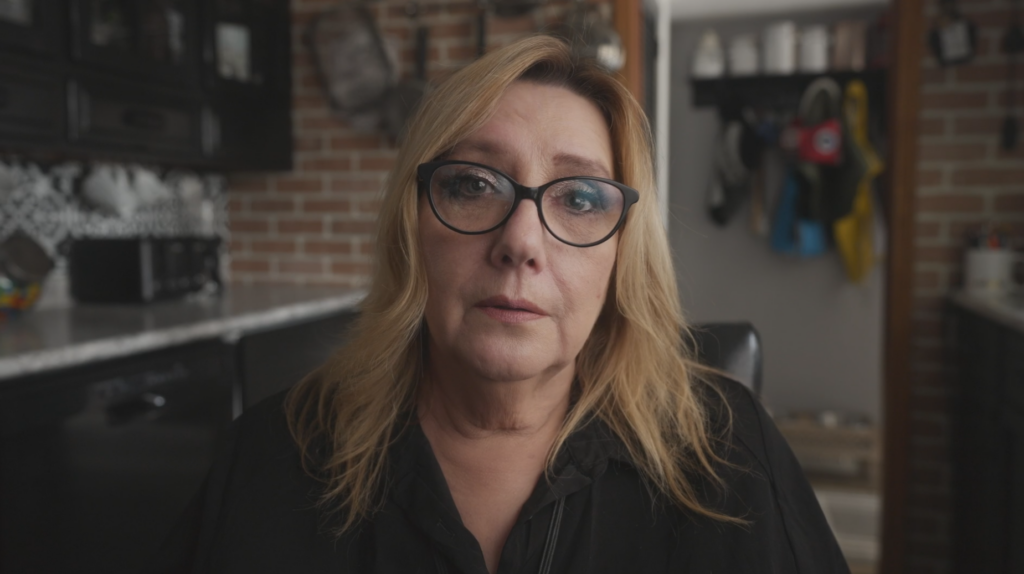
The production value works. The camera. The crew. The sound. The editing. The PR team. These are all great assets–and the best asset of them all? The people in the show.
We have all seen shows where the ghost story is made up. It’s usually some quick cash grab for a celeb (although there were some great truly well done celeb ghost stories, too!) or just some channel/content filler type thing. This is not that….this is what every ghost show should be.
The crew sits down. The people are taken seriously. They are giving a channel to voice their story and by sharing their story, they get to grow and sometimes heal from the telling. We draw strength in knowing we are not alone.
When the episode starts, your emotions range from being afraid for the people to being all warm and fuzzy with knowing that these people are opening themselves up to you and you are not alone.
If you have any paranormal experience, these stories will help you feel a bit more whole.
If you are a believer, this is your show.
If you are a doubter, this is your show. You might still doubt, but you won’t doubt that these are real down to earth people giving witness to what they saw.
See why we call the T+E Channel the Blumhouse of TV and catch the free preview on T+E Channel from Sept 2 to Nov 3
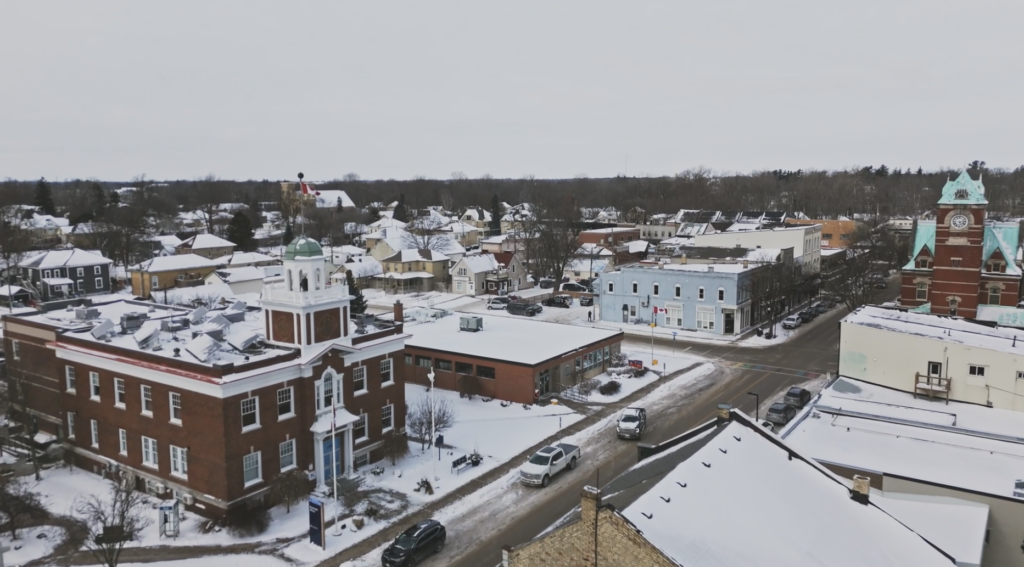
The Setting
I think small towns work well as a setting. If you recall most of Seth Breedlove’s movies are SMALL Town monsters. If you recall our interview with Harker Jones’s interview the scary horror wasn’t the city of LA but the SMALL Town where you are a bit more isolated.
Not only does the setting work because of the more remote feel, but it works because of the people. The people in the show make the show. They are relatable. They are down to earth. They are easily your next best friend after moving into the neighborhood.
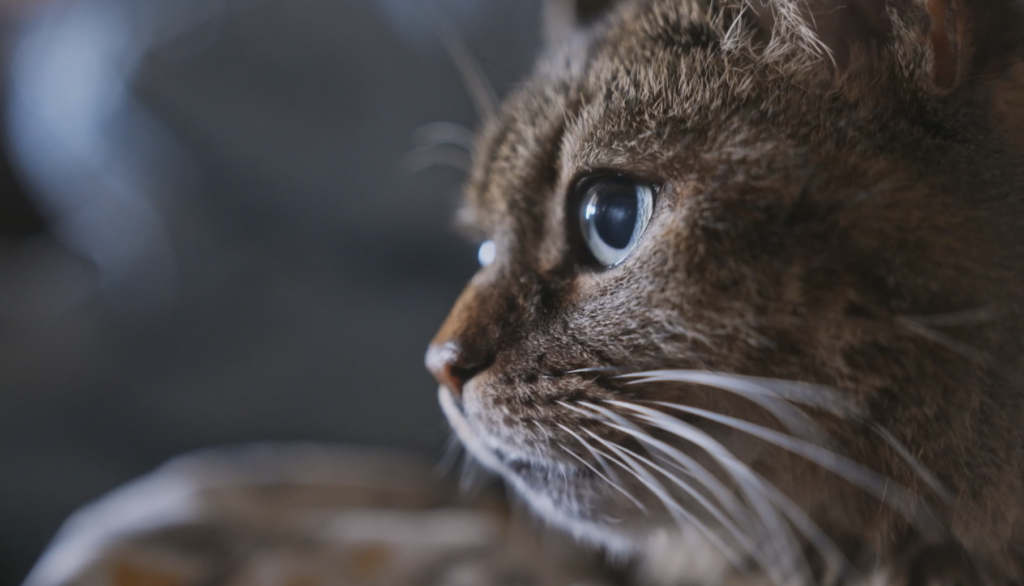
Also, if you are a fan of cats and dogs–there are a few of the most adorable furry friends ever in this episode.
The Rating and Where to Watch
After watching the first episode, I can’t wait for the rest! I’m sure to check it out when they drop every Friday in September! Won’t you join me? 🙂
See what all the rave reviews are about (5/5 Cthulhu!) and see why we call the T+E Channel the Blumhouse of TV and catch the free preview on T+E Channel from Sept 2 to Nov 3 – your gateway to the supernatural! Tune in and share the thrills with #MyHauntedHometown and #TEonTV. Are you brave enough to watch?
 (5 / 5)
(5 / 5)
Gaming
🎮 Eldritch Automata: Exclusive GenCon 2024 Reveal with Nick Francia!
Step into the mind-bending world of Eldritch Automata as we sit down with Game Designer Nick Francia at GenCon 2024!
Uncover the secrets behind this Lovecraftian mecha-masterpiece and get a glimpse of what’s to come.
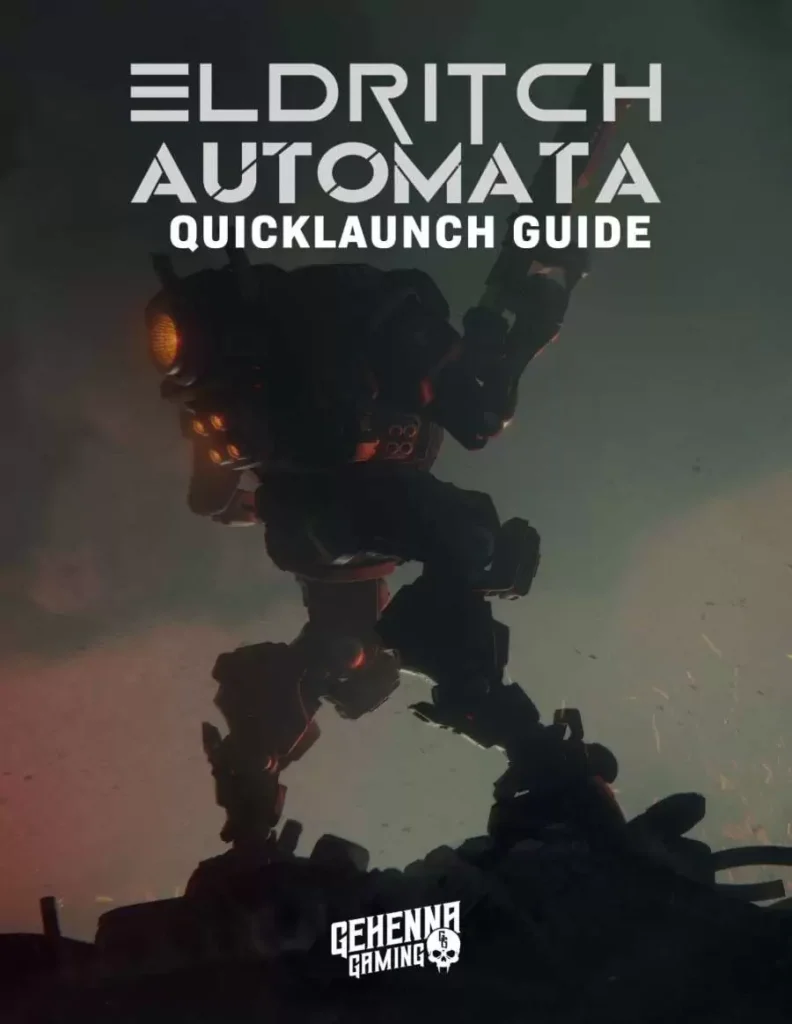
In this exclusive interview, Nick Francia shares:
• The intricate game development process • Inspirations behind the eerie Lovecraftian elements
• Unique mecha-infused gameplay mechanics Calling all Lovecraft fans! Dive into a world where eldritch horrors meet steam-powered marvels.
Eldritch Automata promises an unforgettable gaming experience that will keep you on the edge of your seat.
👉 Ready to embrace the madness? Check out our playable demo at a con near you! #EldritchAutomata #GenCon2024 #LovecraftianGaming #IndieGameDev
Gaming
Interview with Creative Director Michael Highland: Let’s! Revolution! @ PAX
Another game I had the chance to play at PAX East was, Let’s! Revolution!, a Minesweeper-inspired roguelite puzzle game by animation (and now game) studio, BUCK. I talk more about the game itself in another post. Here, I wanted to highlight the conversation I had with Michael Highland, the Creative Director for Let’s! Revolution! and his journey through video game development.
How did you become involved in video game development?
I studied digital media design in college; this was before there were many programs dedicated to game development. After graduating, I self-published a mobile game called Hipster City Cycle with friends. Over the next few years, I slowly got more freelance work as a game designer, and eventually landed a full-time role at thatgamecompany working on the follow-up to their 2012 GOTY Journey. I worked my way up there and was eventually the Lead Designer on Sky: Children of the Light. Working at thatgamecompany opened a lot of doors professionally. I eventually wound up at BUCK, where I saw the opportunity to help establish a new game studio within a very vibrant existing creative culture.
What has been the most challenging aspect of the development process?
Each studio has its own unique issues based on the people involved. There are commonalities like the need to fight feature creep and building consensus around ideas early in the process when all you have is an abstract grey box prototype to react to. At BUCK the biggest challenge has been channeling the abundance of creative energy and talent into a shippable product. There’s a ton of enthusiasm for games within the company, and without clear product-centric goals (who is the target audience, what platform are we releasing on, what’s the marketing strategy), projects have the tendency to spiral out of scope. Another challenge has been building credibility with publishers. BUCK has an amazing pedigree for animation and design, maybe the best in the world, but when we initially pitched ideas to publishers, they all said the same thing: looks great, but until you’ve shipped a game, you’re too high-risk. That’s what led to us self-publishing Let’s! Revolution! Now that we have a well-reviewed game out in the wild, I feel confident we’ll have more luck with publishers.
BUCK primarily has its roots in animation, what led the decision to start branching into video game development?
It started with a general excitement about the medium and a desire among the staff to work on a game. Leadership at BUCK is all about providing the staff with exciting creative opportunities, and getting to work on a game, is, for some, a creative dream come true. And putting BUCK content out in the world is a point of pride and a boost to morale. From a business perspective, the fact we can staff out game projects with the top animation and design talent in the world is a huge advantage. We’re already starting to see new opportunities for the service side of the business based on the success of Let’s! Revolution!
The art, unsurprisingly, is delightful. What were some of the priorities during the character design process and how did those influence the final hero designs?
Our Art Director Emily Suvanvej really led the charge on the look of the game. There are obvious influences like Studio Ghibli, Moebius, and Steven Universe. My shared goal with Emily was to make something together that reflected the diversity of the team’s artistic and lived experiences. The artists put so much love into the character designs and animation, it really shows.
Some of the primary game mechanics take inspiration from Minesweeper, what was the process like to create your own interpretation of those classic mechanics?
This article goes into depth on this topic. The TLDR is that we took a very iterative approach, at each stage trying to identify what was working about the prototype and lean into that. The initial game concept came together relatively quickly in part because our goal for this project was just to finish a game. We just focused on what was good and kept building on it. I wouldn’t say the final game is “perfect” – but we wound up with a much bigger and higher quality experience than I expected by not letting perfectionism get in the way of making good better.
Is there anything else you would like to plug or that you think is important for people to know about Let’s! Revolution! or other upcoming projects?
The music and sound design for the game is stellar. We worked with a creative audio company called Antfood and they knocked it out of the park. The audio got an honorable mention from IGF, which I think is extra impressive because most of the other games were audio-centric titles with some unusual hook to the sound design. For the OST, Antfood reworked all of the music from the game into a continuous flow, like a concept album. It’s so good. I love working with them.


